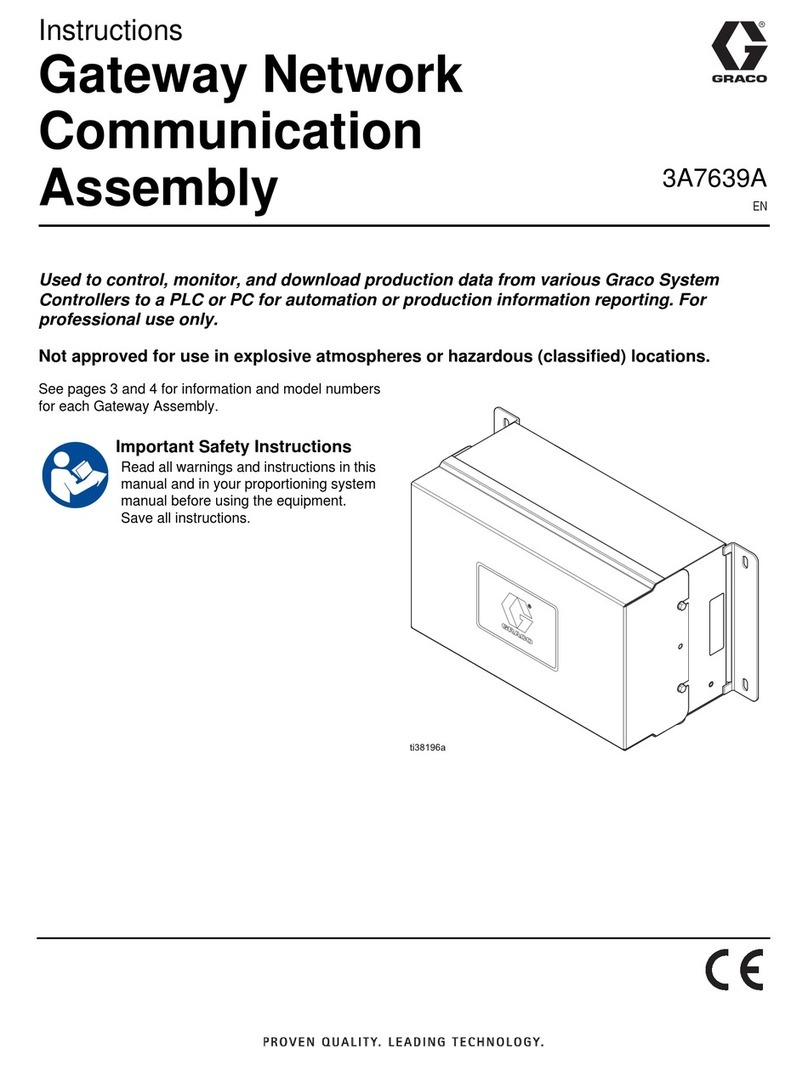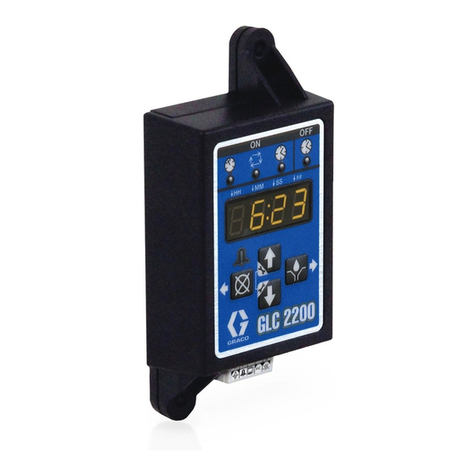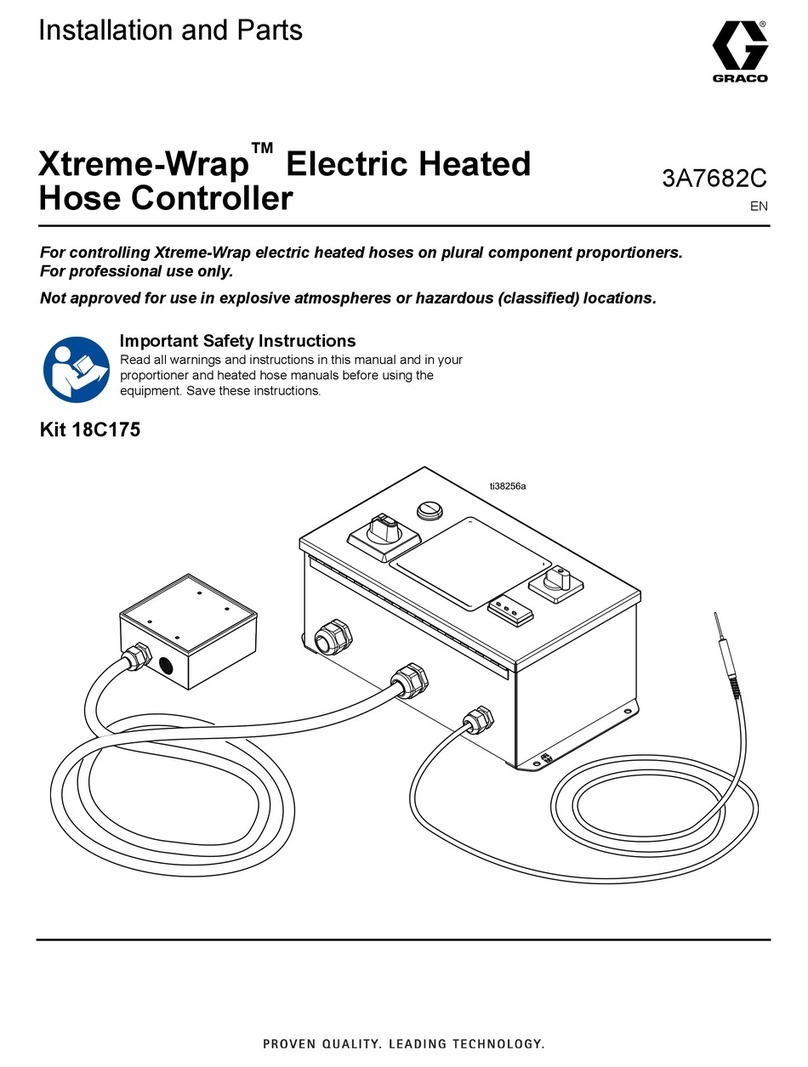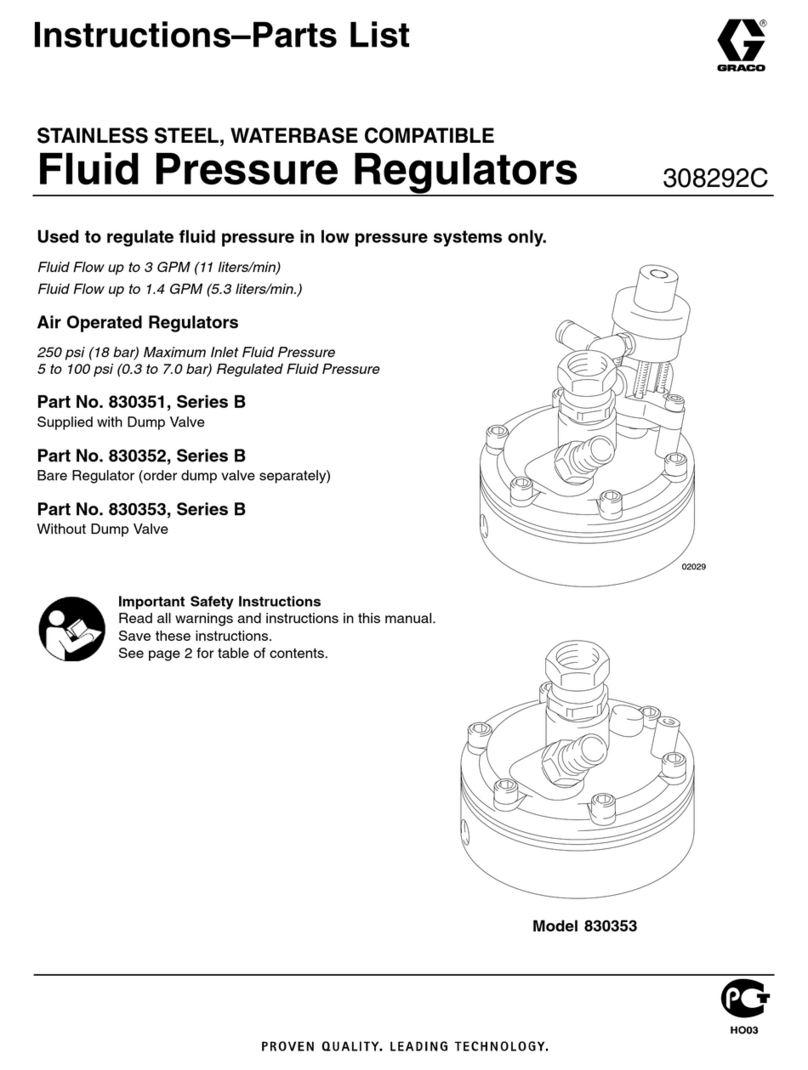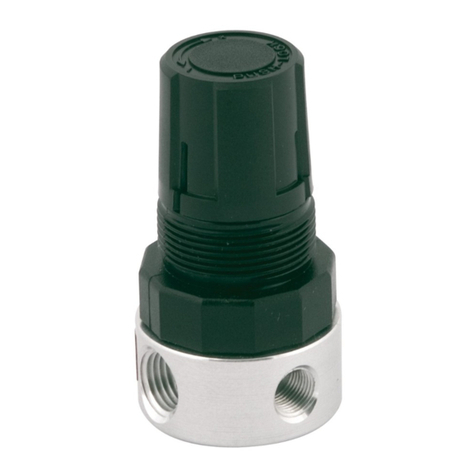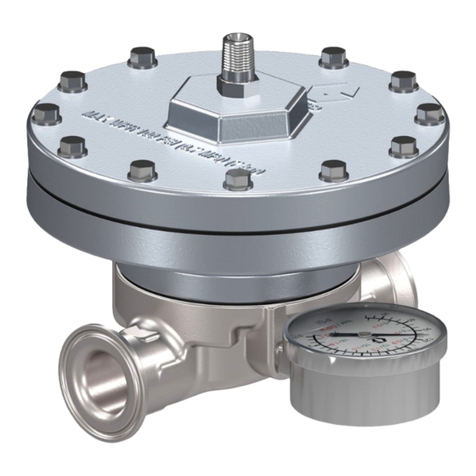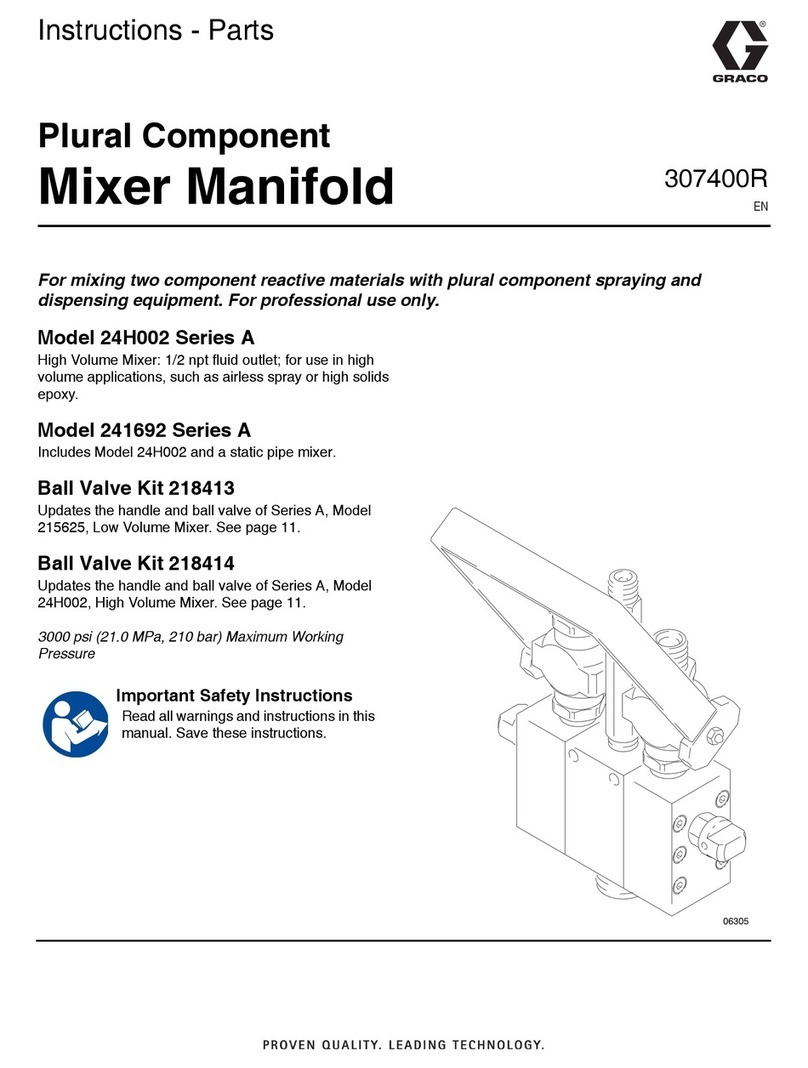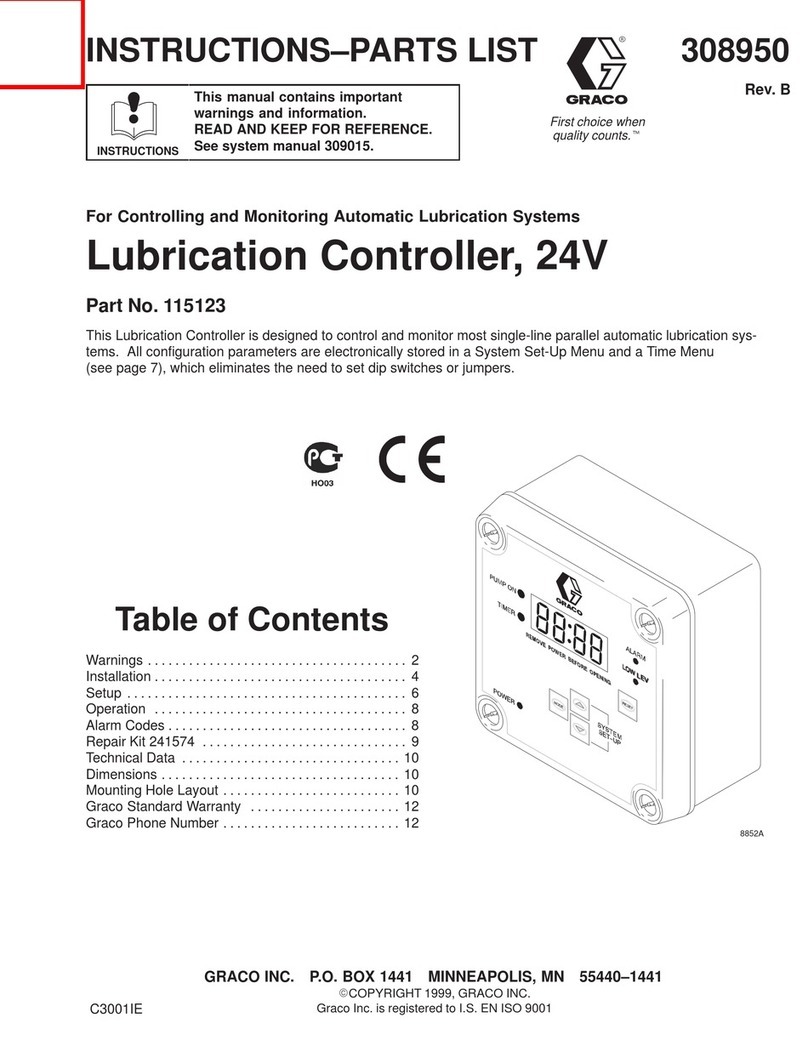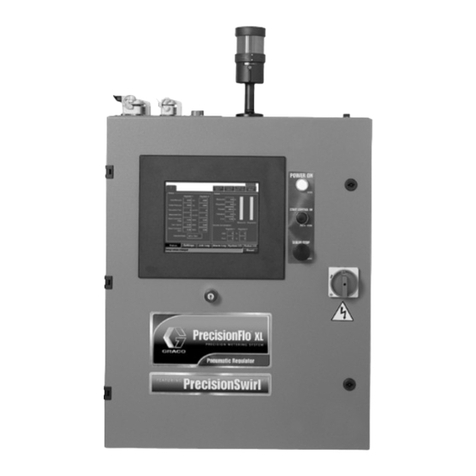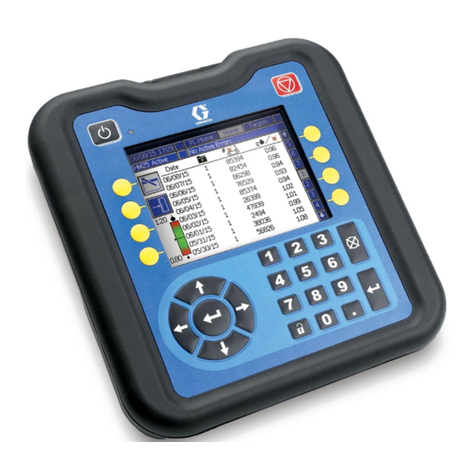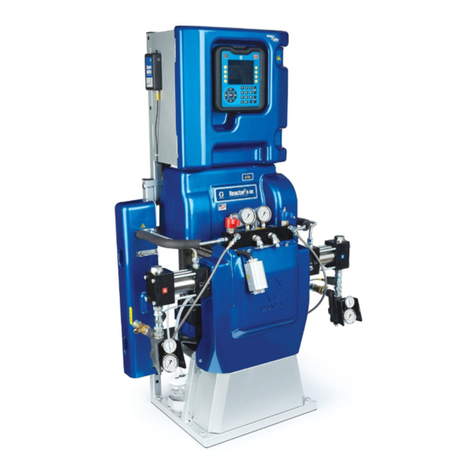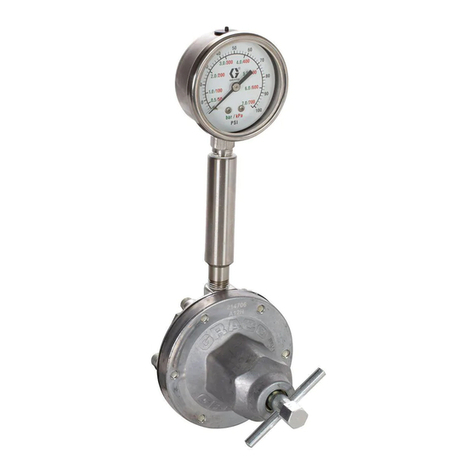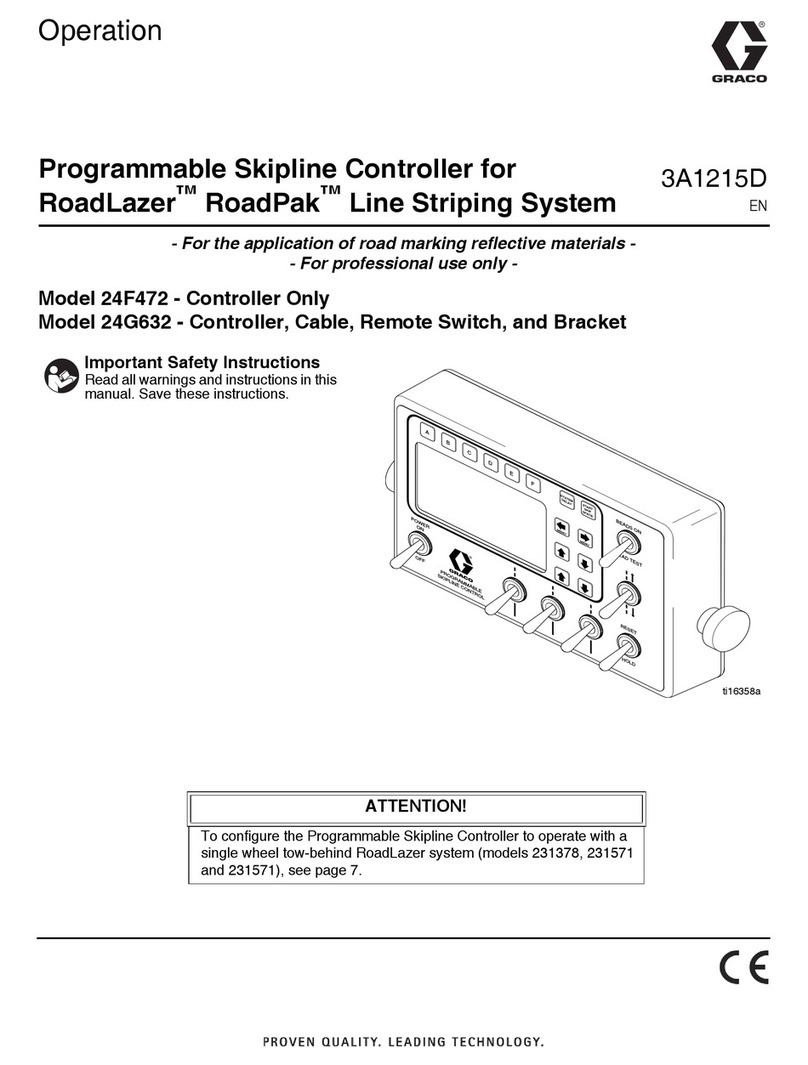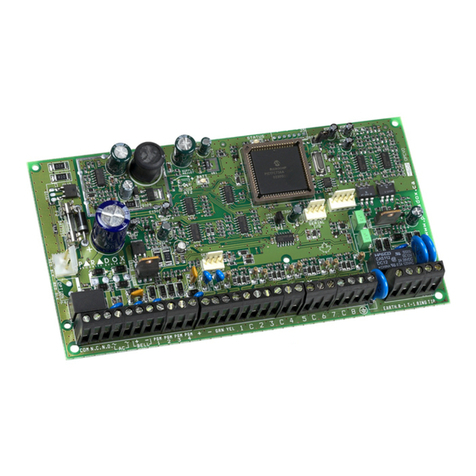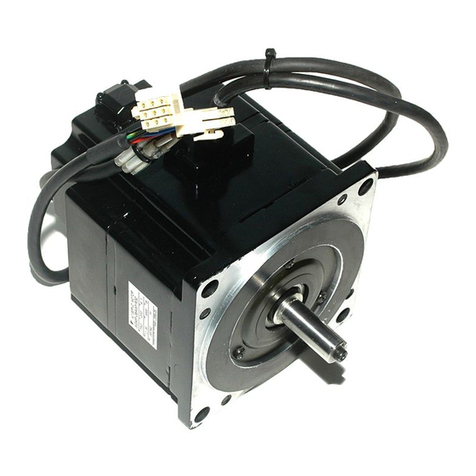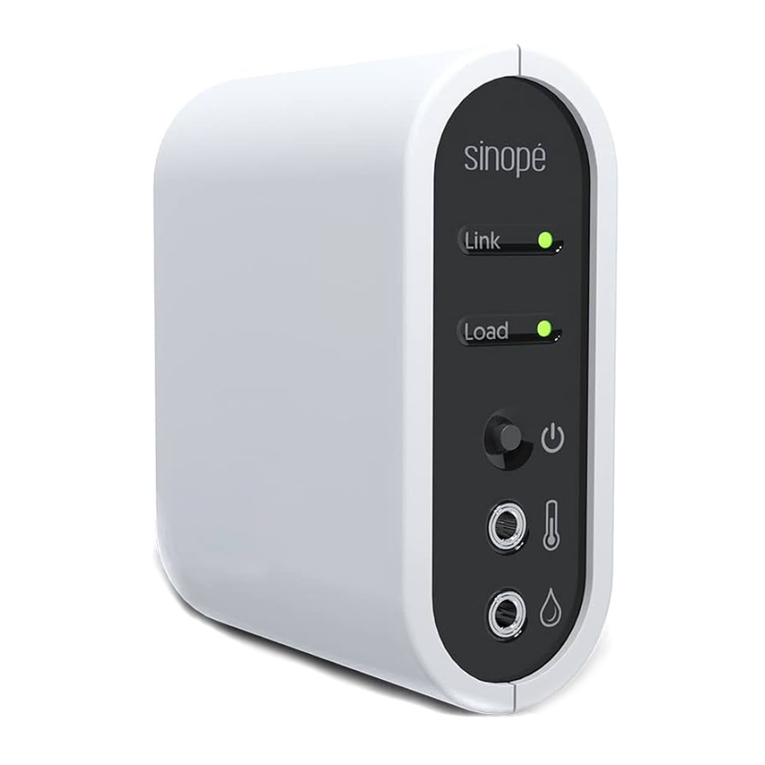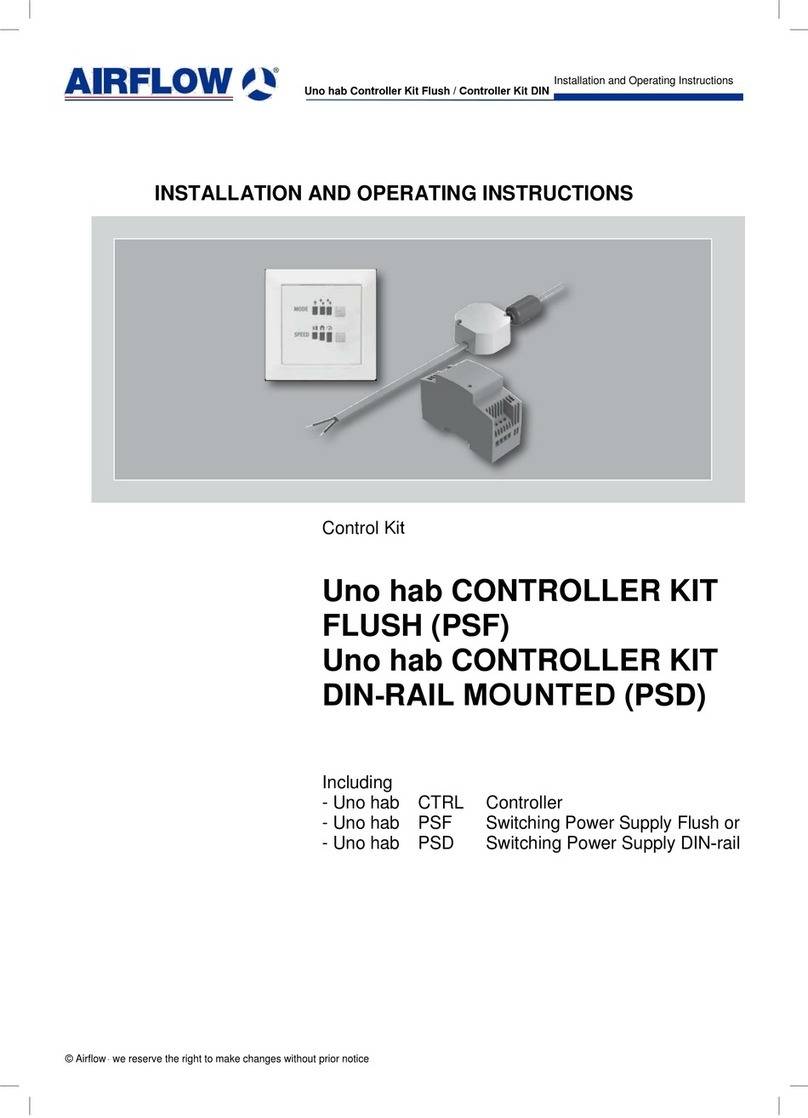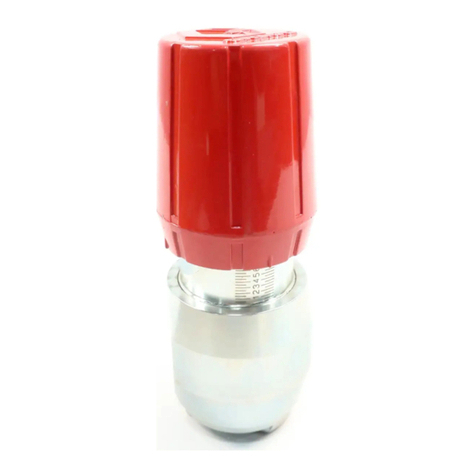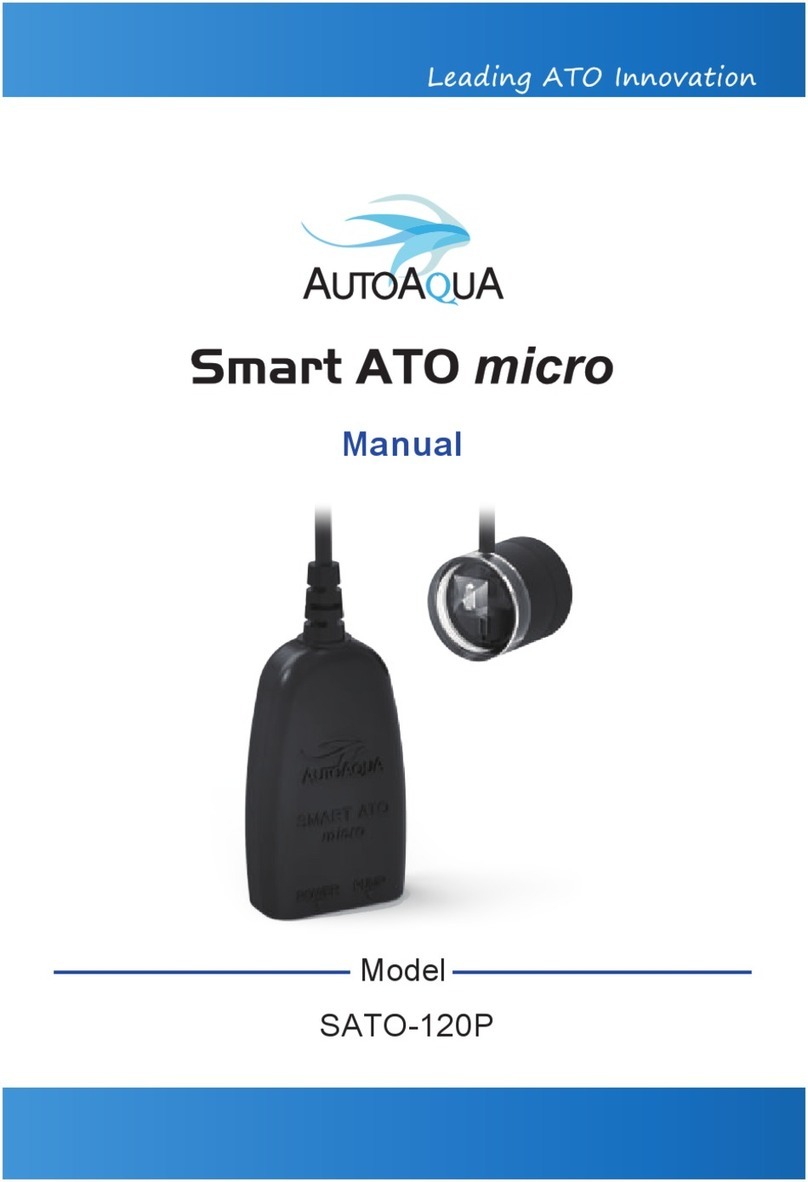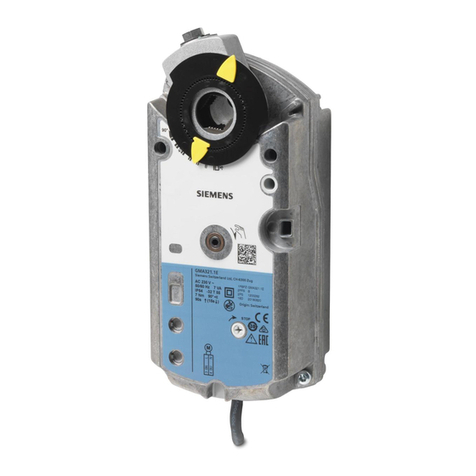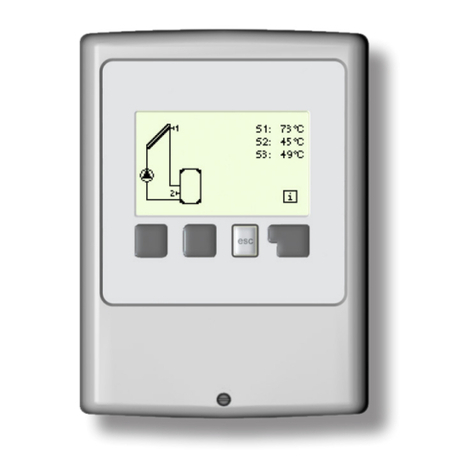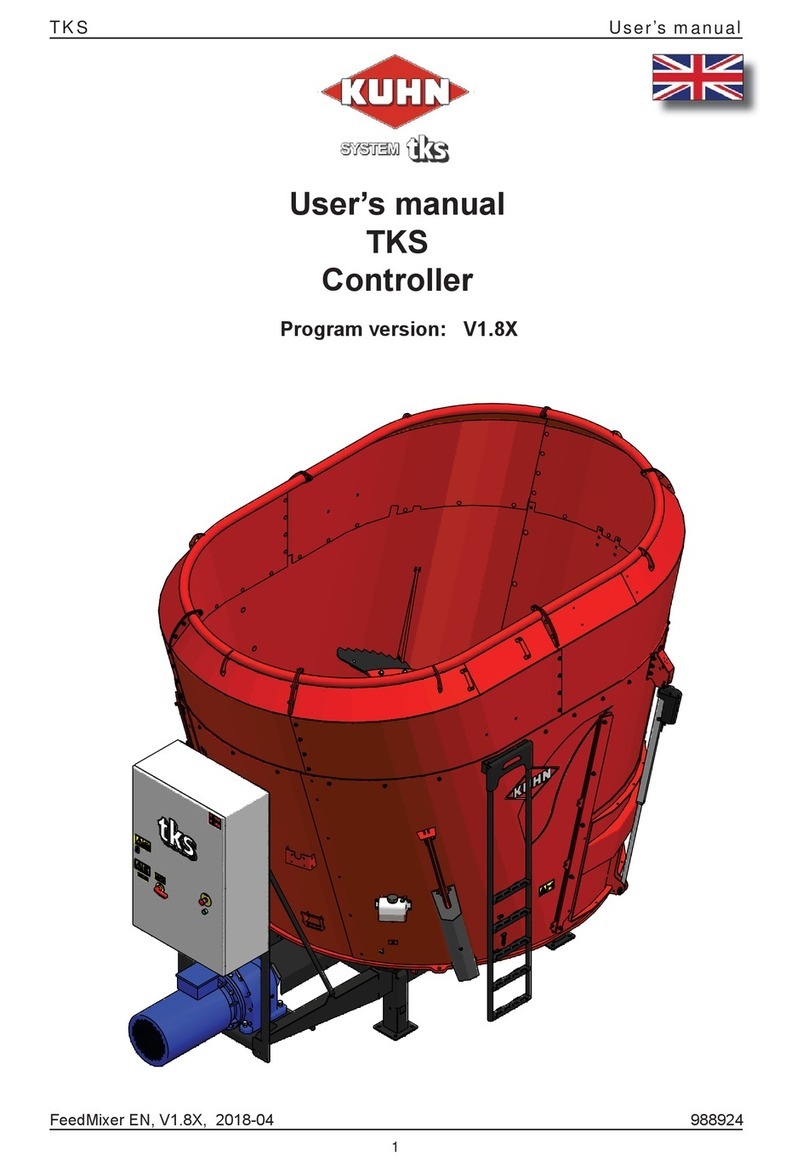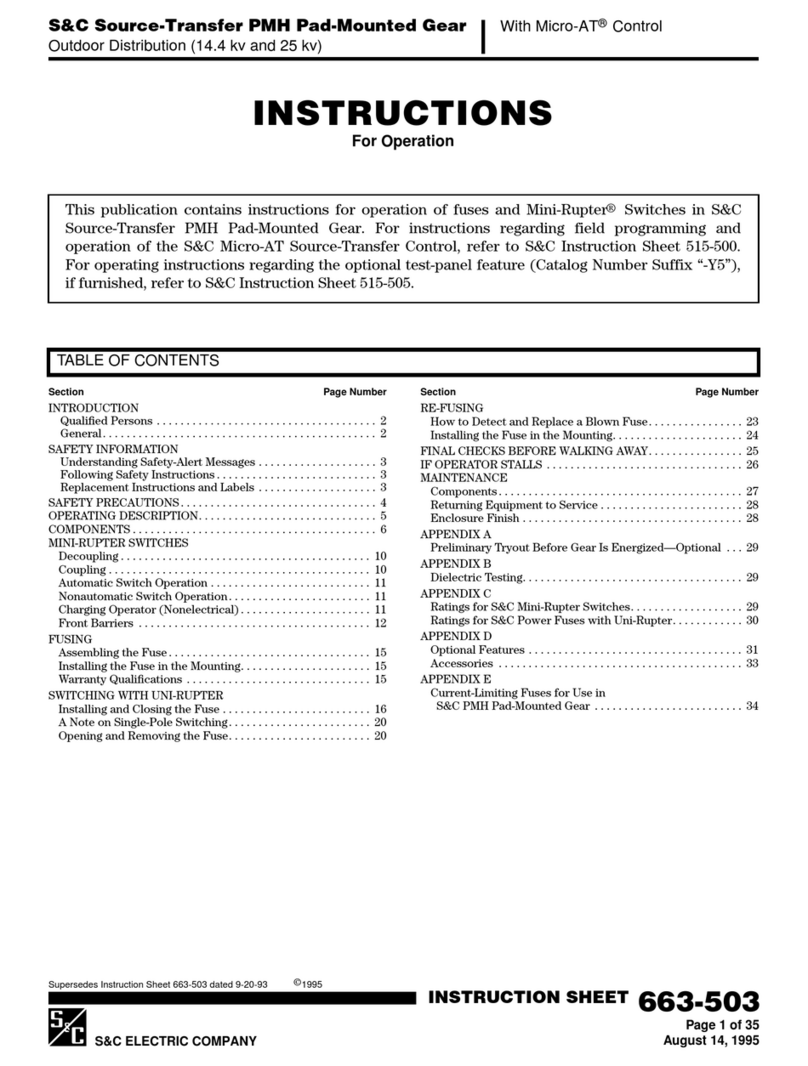
9307–212
Service
Service of the Spring Operated Regulators
WARNING
To
reduce the risk of serious injury whenever you
are instructed to relieve pressure, always follow the
Pressure Relief Procedure
on page 5.
1.
Shut of
f the pump.
2.
Close the ball valve at the regulator
’
s air inlet. See
Fig. 1.
3.
Release all the air and fluid pressure in the regula
-
tor and disconnect the fluid line.
4.
Remove the regulator from the system.
5.
Close the regulator by engaging the internal hex
portion of the key (24) with the adjusting screw
(12) and turning it counterclockwise all the way
.
See Fig. 3.
6.
Remove the swivel union (23) from the regulator
inlet.
7.
Remove the ball (20), valve seat (16), and gasket
(15). See Fig. 5.
CAUTION
Use special care when handling the hard carbide ball
(20) and seat (16) to avoid damaging them.
8.
Remove the six cap screws (1) while holding the
cap (7) to the housing (6).
9.
Remove the cap, adjusting screw (12) and spring
(5).
10.
Remove the stem retaining screw (10), ham nut
(13), and washer (17) from the stem housing (18).
11.
Remove the diaphragm (25) –
on Models 217–314
and 221–1
18 only
,
diaphragm (22), and gasket
(26).
12.
Remove the spring (3), valve stem (9) and gasket
(21) from the stem housing.
13.
Thoroughly clean and inspect all parts. Replace
any parts that appear to be worn or damaged.
14.
One at a time, place the gasket (26), diaphragm
(22) –
white side down toward bottom
housing,
diaphragm (25) –
on Models 217–314
and 221–1
18 only
,
and washer (17) on the stem
housing (18). Secure them with the jam nut (13).
NOTE:
On Models 217–314 and 221–1
18,
align the
holes on the diaphragms (25 & 22) before tightening
the jam nut (13).
Models 214–895 and 214–706 Only
T
orque the jam nut (13) onto the stem housing to
21–35 ft-lb (28–47 N
Sm).
Model 217–314 and 221–1
18 Only
T
orque the jam nut (13) onto the stem housing (18) to
21–35 ft-lb (28–47 N
Sm).
15.
Install the valve stem (9), spring (3), gasket (21)
and retaining screw (10) in the stem housing (18).
Models 214–895 and 214–706 Only
T
orque the retaining screw (10) into the housing to
90–1
10 in-lb (10–12 N
Sm).
Model 271–814 and 221–1
18 Only
T
orque the retaining screw (10 into the housing to
21–25 ft-lb (28–34 N
Sm).
16.
Coat the outer surfaces of the spring (5) with no. 2
lithium base grease.
17.
Install the spring, adjusting screw (12) and cap on
the housing (6). T
ighten six capscrews (1) in the
sequence shown in Fig. 5,
Bottom V
iew
, and to
the torque noted.
18.
Install the gasket (15), valve seat (16), and ball
(20) into the housing (6).
NOTE:
Seat may be turned upside down and reused.
19.
Screw the swivel union (23), with the o-ring (4)
attached, into the inlet. T
orque to 23–27 ft-lb
(31–36 N
Sm).

